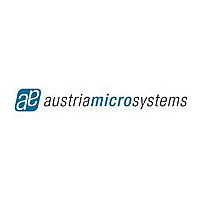as5040 austriamicrosystems, as5040 Datasheet - Page 17

as5040
Manufacturer Part Number
as5040
Description
10-bit Programmable Magnetic Rotary Encoder
Manufacturer
austriamicrosystems
Datasheet
1.AS5040.pdf
(27 pages)
Available stocks
Company
Part Number
Manufacturer
Quantity
Price
Part Number:
AS5040
Manufacturer:
AMS
Quantity:
20 000
Company:
Part Number:
as5040 AB
Manufacturer:
austriamicrosystems
Quantity:
135
Company:
Part Number:
as5040-ASST
Manufacturer:
AMS
Quantity:
1 500
Part Number:
as5040-ASST
Manufacturer:
AMS
Quantity:
20 000
Company:
Part Number:
as5040-ASSU
Manufacturer:
AMS
Quantity:
1 000
Part Number:
as5040-EK-AB
Manufacturer:
BOARDADAPTER
Quantity:
20 000
AS5040 10-BIT PROGRAMMABLE MAGNETIC ROTARY ENCODER
10.3 Zero Position Programming
Zero position programming is an OTP option that
simplifies assembly of a system, as the magnet does not
need to be manually adjusted to the mechanical zero
position.
mechanical and electrical zero positions can be matched
by software. Any position within a full turn can be defined
as the permanent new zero/index position.
For zero position programming, the magnet is turned to
the mechanical zero position (e.g. the “off”-position of a
rotary switch) and the actual angular value is read.
This value is written into the OTP register bits Z9:Z0 (see
Figure 14) and programmed as described in section 10.
This new absolute zero position is also the new Index
pulse position for incremental output modes.
Note: The zero position value may also be modified
before programming, e.g. to program an electrical zero
position that is 180° (half turn) from the mechanical zero
position, just add 512 to the value read at the mechanical
zero position and program the new value into the OTP
register.
10.4 Repeated OTP Programming
Although a single AS5040 OTP register bit can be
programmed only once (from 0 to 1), it is possible to
program other, unprogrammed bits in subsequent
programming cycles. However, a bit that has already
been programmed should not be programmed twice.
Therefore it is recommended that bits that are already
programmed are set to “0” during a programming cycle.
10.5 Non-permanent Programming
It is also possible to re-configure the AS5040 in a non-
permanent way by overwriting the OTP register.
This procedure is essentially a “Write Data” sequence
(see Figure 14) without a subsequent OTP programming
cycle.
The “Write Data” sequence may be applied at any time
during normal operation. This configuration remains set
while the power supply voltage is above the power-on
reset level (see 3.5).
See Application Note AN5000-20 for further information.
Revision 1.8
Once
the
assembly
is
completed,
the
www.austriamicrosystems.com
10.6 Analog Readback Mode
Non-volatile programming (OTP) uses on-chip zener
diodes, which become permanently low resistive when
subjected to a specified reverse current.
The quality of the programming process depends on the
amount of current that is applied during the programming
process (up to 130mA). This current must be provided by
an external voltage source. If this voltage source cannot
provide adequate power, the zener diodes may not be
programmed properly.
In order to verify the quality of the programmed bits, an
analog level can be read for each zener diode, giving an
indication whether this particular bit was properly
programmed or not.
To put the AS5040 in analog readback mode, a digital
sequence must be applied to pins CSn, Prog and CLK as
shown in Figure 17. The digital level for this pin depends
on the supply configuration (3.3V or 5V; see section 12).
The second rising edge on CSn (OutpEN) changes pin
Prog to a digital output and the log. high signal at pin
Prog must be removed to avoid collision of outputs (grey
area in Figure 17).
The following falling slope of CSn changes pin Prog to an
analog output, providing a reference voltage V
must be saved as a reference for the calculation of the
subsequent programmed and unprogrammed OTP bits.
Following this step, each rising slope of CLK outputs one
bit of data in the reverse order as during programming.
(see Figure 17: Md0-MD1-Div0,Div1-Indx-Z0…Z9, ccw)
During analog readback, the capacitor at pin Prog (see
Figure 16) should be removed to allow a fast readout
rate. . If the capacitor is not removed the analog voltage
will take longer to stabilize due to the additional
capacitance.
The measured analog voltage for each bit must be
subtracted from the previously measured V
resulting value gives an indication on the quality of the
programmed bit: a reading of <100mV indicates a
properly programmed bit and a reading of >1V indicates
a properly unprogrammed bit.
A reading between 100mV and 1V indicates a faulty bit,
which may result in an undefined digital value, when the
OTP is read at power-up.
Following the 16
must be reset by disconnecting the power supply.
th
clock (after reading bit “ccw”), the chip
ref
Page 17 of 27
, and the
ref
, that












